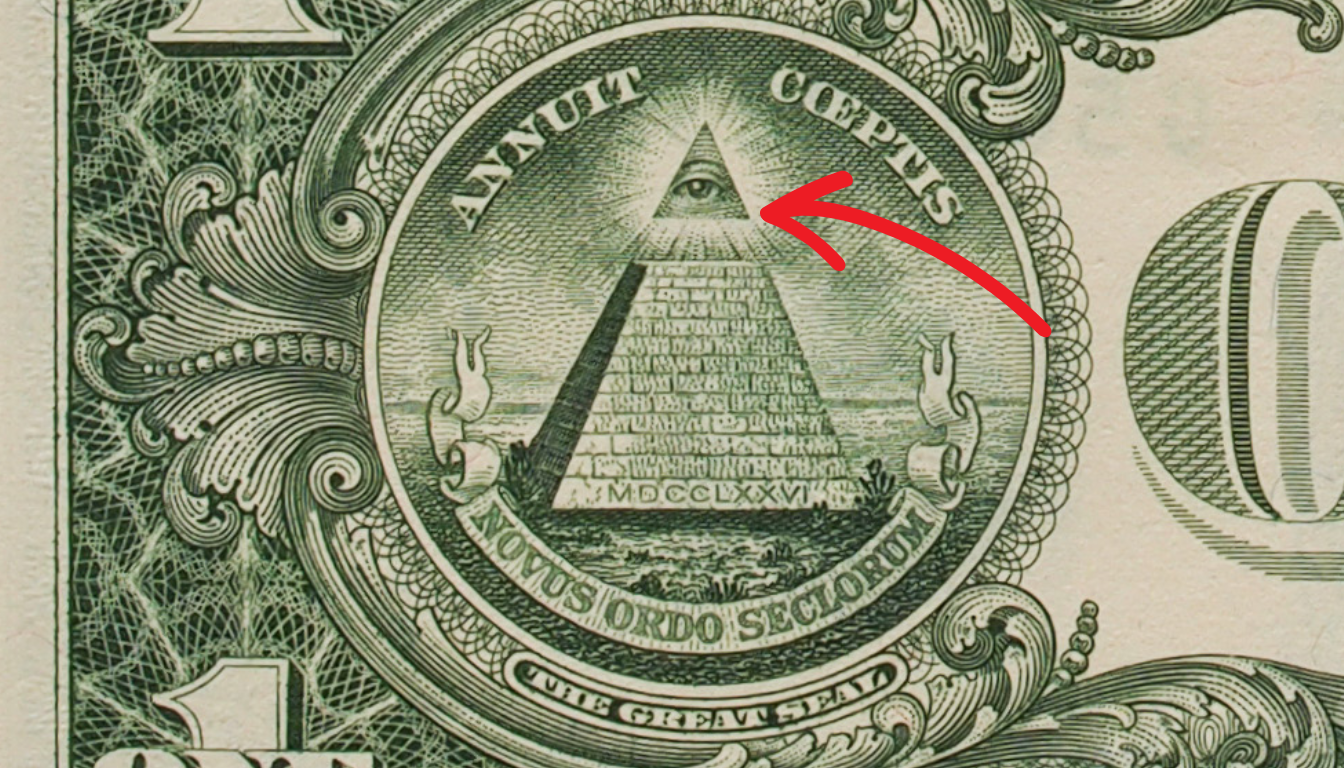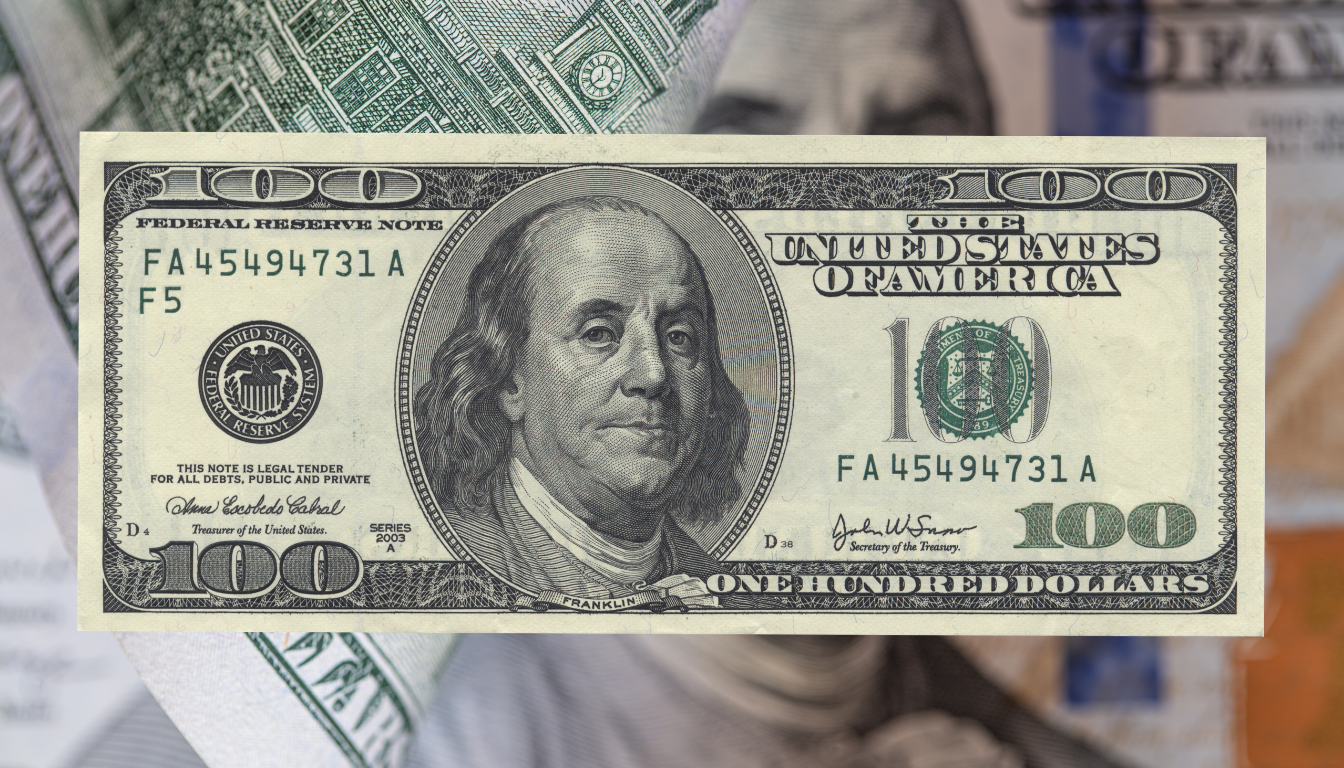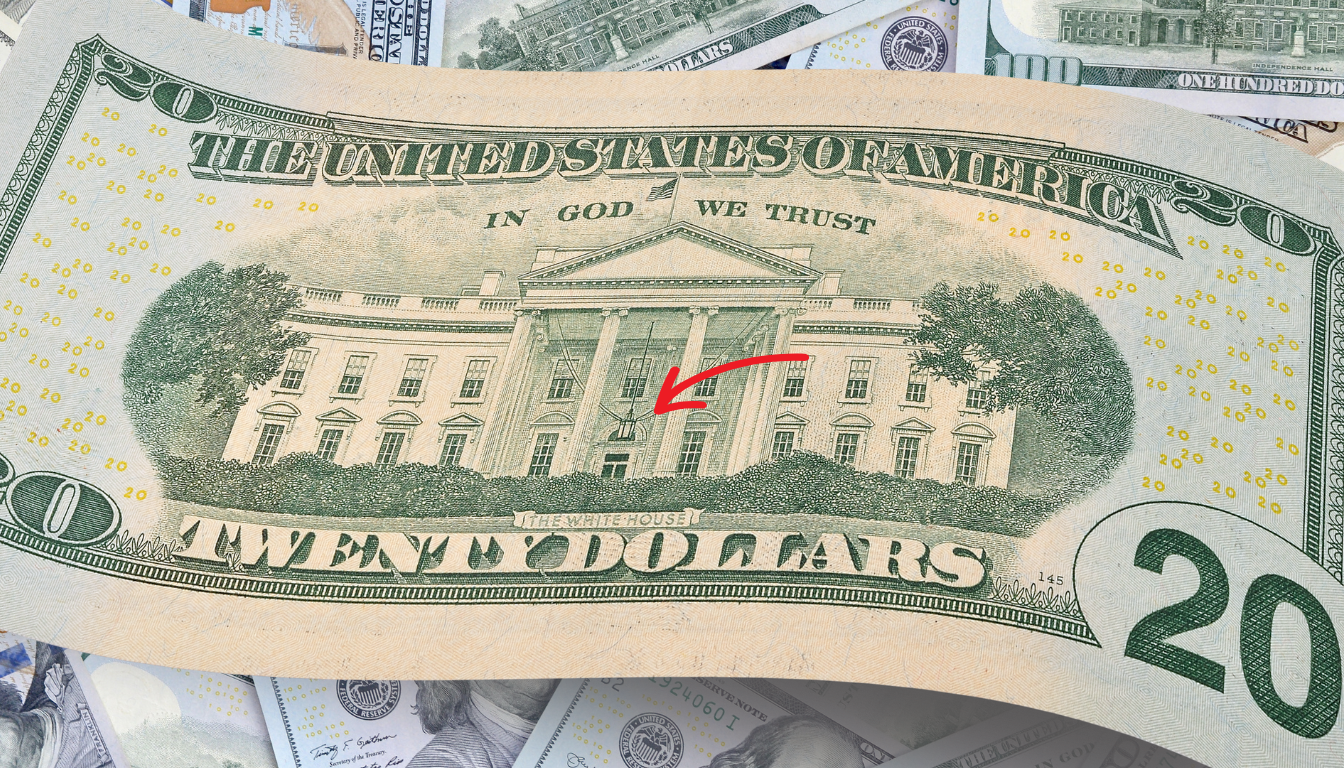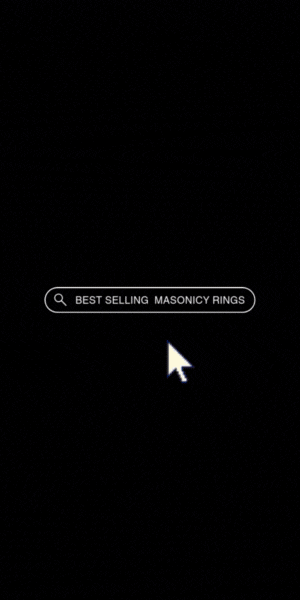
Did you know 1 in 10 adult males in the U.S. was a Freemason in the 1950s? This fact shows how big Freemasonry was in America. It is one of many reasons Masonic Symbols on the US Dollar can be seen along with many other currencies worldwide.
The Eye of Providence is on the back of the one-dollar bill. It’s linked to Freemasonry but was there first. It stands for Brotherly Love, Relief, and Truth.
The unfinished pyramid is also on the bill. It comes from early American history and Renaissance art.
Many think these symbols are part of Masonic rituals. But, it’s not that simple. The pyramid and eye don’t really connect to Masonic practices. This mystery shows how interesting the dollar bill is and Freemasonry’s big role in America.
Key Takeaways
- Freemasonry peaked in the 1950s with nearly 4 million U.S. members
- The Eye of Providence symbolizes Brotherly Love, Relief, and Truth
- Masonic symbols on the dollar bill are not directly tied to Masonic rituals
- The unfinished pyramid represents early American history
- Freemasonry is inclusive of various religious backgrounds
- The dollar’s design has sparked numerous theories and debates
The Historical Origins of Masonic Symbolism in Currency
The history of Masonic symbols in American money goes back to the Renaissance. It also touches on early American history. These symbols show the mix of art, politics, and beliefs that shaped America.
You may also like: Masonic Influence in America Through Strength, Leadership, and Community
The Renaissance Era Influence
In the Renaissance, artists used symbols like the Eye of Providence. These symbols later appeared on American money. This time’s love for symbols helped shape future money designs.
Early American Currency Design
The Founding Fathers, many Freemasons, helped design American money. Benjamin Franklin, a Mason, was first on a U.S. coin in 1948. Masonic symbols were used in the nation’s money, not just by individuals.
Adoption of Symbolic Elements
Masonic symbols were added to U.S. currency over time. The Great Seal, with the Eye of Providence and a pyramid, was adopted in 1782. These symbols were not in Freemasonry until later, debunking some conspiracy theories.
- Since 1900, 38 Americans on U.S. coins were Freemasons
- 14 confirmed Masonic Presidents of the United States
- 13 of the 39 U.S. Constitution signers were Freemasons
These facts show Freemasons’ big role in early America and money design. They helped shape the symbols on American money we see today.
Understanding the Eye of Providence on the Dollar Bill
The Eye of Providence, or the all seeing eye, is a strong symbol on the US dollar bill. It has made people curious and sparked debates for many years.
Religious Significance of the All-Seeing Eye
The Eye of Providence shows divine wisdom and watchfulness. It comes from old religious texts. The Book of Psalms, written between 800 and 600 BC, talks about God’s all-seeing nature.
In the Renaissance, artists showed this idea as an eye in a triangle with rays of light.
Also see: How To Become A Freemason – 5 Incredible Benefits That Changed My Life
Connection to Divine Guidance
This symbol reminds us of spiritual watch. It means a higher power sees our actions and thoughts. For many, it brings comfort and makes them feel accountable every day.
Historical Context and Adoption
The Eye of Providence was added to the Great Seal of the United States in 1782. This was before it became known in Freemasonry. The symbol shows the founding fathers believed in a divine guide for the new nation.
| Year | Event |
|---|---|
| 1782 | Adoption on Great Seal of the United States |
| 1797 | Association with Freemasonry begins |
| 1935 | Appears on US one-dollar bill |
The Eye of Providence’s journey from ancient times to the US dollar bill is fascinating. Its place on the dollar bill still makes people think about spirituality and national identity.
The Great Seal and Masonic Symbols on the US Dollar
The Great Seal of the United States is on the dollar bill. It has sparked many conspiracy theories. But, the truth is not as mysterious as people think.
The seal was made in 1782, before Masons used similar symbols. It has an unfinished pyramid and the Eye of Providence. These symbols are not Masonic, but represent American ideals and divine guidance.
Only one Mason, Benjamin Franklin, was on the design committee. His ideas were not used in the final design. The seal was added to the dollar in 1935 by two Freemasons, Franklin D. Roosevelt and Henry A. Wallace.
Freemasonry was part of early American history. But, its influence on US currency is often too big. The symbols on the dollar bill stand for national values, not secret messages.
“Freemasonry is not a religion; members must believe in a God but are not restricted to a specific deity.”
This fact shows the dollar does not promote Masonic beliefs. The symbols on US currency remind us of the nation’s founding principles, not secret codes.
Decoding the Pyramid: Significance and Meaning
The pyramid on the US dollar bill has secrets that make us curious. It’s full of symbols and history, showing America’s founding values.
The Unfinished Pyramid Symbolism
The pyramid is not complete, showing America’s journey is ongoing. It has 13 steps, for the original colonies. The year 1776 is at the base, marking the Declaration of Independence.
Thirteen Steps and Their Representation
The number 13 is key on the dollar bill, showing the original states:
- 13 arrows in the eagle’s talons
- 13 olive branch leaves
- 13 stars above the eagle
- 13 stripes on the shield
Latin Inscriptions and Their Meanings
Two Latin phrases are on the pyramid, adding to its meaning:
| Inscription | Location | Translation | Meaning |
|---|---|---|---|
| Annuit Coeptis | Above the pyramid | “God has favored our undertaking” | Divine approval of America’s mission |
| Novus Ordo Seclorum | Below the pyramid | “A new order of the ages” | Birth of a new era in human history |
Together, these parts show America’s dreams and values. They prove there’s no hidden agenda, unlike what some say.

Common Misconceptions About Masonic Symbols on the US Dollar
The US dollar’s design has led to many myths. These myths often involve masonic imagery and freemasonry symbolism. Let’s look at some common misunderstandings.
What to become a Freemason? Then go here >> How To Join Freemasons – Secret Coded Answer: ASK12B1
Debunking Conspiracy Theories
One myth says the pyramid on the Great Seal spells “MASON” with a six-pointed star. This only works on the 1935 dollar bill. The Eye of Providence is often called the “Eye of Horus” or an “all-seeing eye,” leading to Illuminati theories.
Historical Facts vs. Popular Myths
The Great Seal wasn’t made by a secret society. Only four people worked on it, none were Freemasons. The Latin phrase “Novus ordo seclorum” is often wrongly translated as “new world order.” It actually means “new order of the ages.”
| Myth | Fact |
|---|---|
| Pyramid symbolizes Masonic control | Represents strength and durability |
| Eye represents Illuminati surveillance | Symbolizes divine providence |
| Latin phrases hide secret messages | Reflect American ideals and history |
Knowing these facts helps clear up conspiracy theories about masonic imagery on US cash. The symbols on our money stand for American values, not secret society plans. By understanding the true meanings of freemasonry symbolism, we can see the rich history of our currency design.
The Role of Freemasons in American Currency Design
Freemasons have long been a topic of interest in American currency design. Many wonder about their role in our money. But, the truth is more complex than most think.
Benjamin Franklin’s Influence
Benjamin Franklin was a key Freemason who shaped early American currency. In 1948, he became the first non-president on a US coin, the half dollar. This honor was for his big role in our nation’s start and finance.

Early Treasury Department Decisions
The Treasury Department made early decisions on currency design. They worked with both Masons and non-Masons. Their goal was to use symbols that showed American values, not just Masonic ones.
Many interesting facts show Masonic influence. Since 1900, 38 Americans have been on US coins. Among them, 14 were presidents and at least ten were non-presidential officials.
| Category | Number of Freemasons |
|---|---|
| Americans on US coins since 1900 | 38 |
| Presidents on future US coins | 14 |
| Non-presidential officials on coins | 10+ |
Speculation about secret societies and dollar design is common. But, Masonic involvement in currency design was mostly about individual contributions. The symbols on our money tell a story of who we are. Masonic elements play a small but important part in that story.
Masonic Symbolism Beyond the Dollar Bill
Freemasonry symbolism goes way beyond our money. It touches many parts of American life, like buildings, art, and public areas.
The Square and Compasses are very well-known. They remind Freemasons to stay moral. The All-Seeing Eye, added in 1797, is on the dollar bill and means a lot to Masons.
Other symbols have deep meanings:
- Anchor and Ark: Show hope and peace in tough times
- Acacia Tree: Means living forever
- Beehive: Shows working together
- 47th Problem of Euclid: Means order and structure
Masonic influence is seen in big landmarks. The George Washington Masonic National Memorial in Alexandria, Virginia, has a statue of Washington in his Masonic apron. This monument, opened by Freemason Harry Truman, shows Masonry’s big impact on America.
Also, 13 of the 39 U.S. Constitution signers were Freemasons. Their ideas helped shape America’s early values.
The Evolution of Currency Symbolism in Modern America
Money in America has changed over time. It now has old traditions and new safety features. Many people talk about the symbols on money, wondering if they are patriotic or old-fashioned.
Contemporary Interpretations
Today, people see money symbols in different ways. The Eye of Providence, linked to Masonic symbols, is often talked about. It has been around since 1782, but some still think it’s a secret society sign.
Cultural Impact and Public Perception
The symbols on U.S. money have shaped American culture. For example, “In God We Trust” was added to all money in 1957. This shows how religion still affects American life.
Modern Security Features vs. Historical Elements
Modern U.S. money keeps old designs but adds new security. The $1 bill, unchanged since 1963, is a good example. It has George Washington’s picture and the Great Seal, plus new security threads and ink that changes color.
| Bill | Historical Element | Modern Security Feature |
|---|---|---|
| $1 | Great Seal | Watermarks |
| $20 | Andrew Jackson Portrait | Color-shifting ink |
The design of U.S. money balances tradition and innovation. This mix makes money both meaningful and safe today.
Conclusion: Understanding the Legacy of Masonic Imagery
The symbols on the US dollar have always caught people’s attention. They show a deep history and values of America. The National Heritage Museum in Lexington, Massachusetts, has over 25,000 items related to Freemasonry.
This museum helps us understand the symbols’ role in American culture. Exhibits like “Decoding the Masonic Symbols on the US Dollar” teach us about Freemasonry’s impact. They mix Masonic views with history, attracting everyone.
Research shows how Freemasonry has shaped America. In 1792, 13.3% of White House workers were Freemasons. By 1810, Washington had 150 more Masonic lodges.
These facts show Freemasonry’s big role in America’s start. The symbols on our money remind us of this important history. They help us see the complex ideas and values that make America.
FAQ
What are the main Masonic symbols on the US dollar?
The Eye of Providence and the unfinished pyramid are key symbols on the US dollar. They are on the back of the one-dollar bill, part of the Great Seal of the United States.
Is the Eye of Providence exclusively a Masonic symbol?
No, the Eye of Providence is not just for Freemasons. It shows God’s care for all people. It was used before Freemasons took it up.
What does the unfinished pyramid on the dollar bill represent?
The unfinished pyramid shows America’s ongoing growth. Its thirteen steps stand for the original thirteen colonies. It shows the nation’s growth and development.
Are there hidden Illuminati messages in the dollar bill design?
No, there are no secret Illuminati messages on the dollar bill. The symbols stand for American ideals and God’s care. Misconceptions come from movies and books, not facts.
What do the Latin inscriptions on the dollar bill mean?
The Latin words say “God has favored our undertakings” and “A new order of the ages.” They talk about the nation’s founding and hopes.
Did Freemasons design the US dollar?
Some Freemasons were in early American government. But they didn’t design the dollar alone. Many people, Masons and non-Masons, worked together on the design.
How has the symbolism on American currency evolved over time?
The symbols on money have changed to keep history and security. New designs add security while keeping important symbols. These symbols still affect how people see America today.
Are there Masonic symbols in other aspects of American culture?
Yes, Masonic symbols are in many parts of American culture. You can see them in buildings, art, and more. Symbols like the square and compass show Freemasonry’s values.












